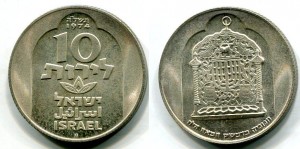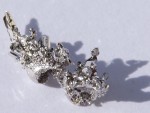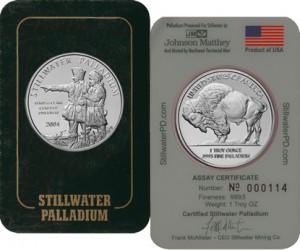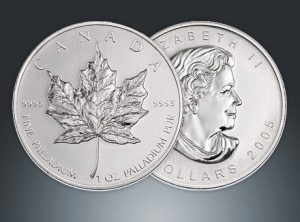CHANGING SUBSCRIPTION SERVICE APRIL 1
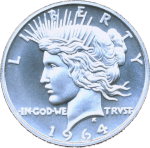 Last October, I announced that the Coin Collectors Blog and Coin Collectors News will change the subscription service to use WordPress to send email updates. Unfortunately, the family experienced a tragedy that caused postponement of a lot of plan.
Last October, I announced that the Coin Collectors Blog and Coin Collectors News will change the subscription service to use WordPress to send email updates. Unfortunately, the family experienced a tragedy that caused postponement of a lot of plan.
Now it is time to move the subscription system. On April 1, 2021, I will turn off Google’s Feedburner service and exclusively use WordPress. However, WordPress does not allow me to import email addresses from the old system. Those interested in receiving updates via email must subscribe via the form below or in the sidebar.
Please visit the Coin Collectors News site to sign up for updates when the industry makes news.
Thank you for reading.
Thank you for being part of my collecting adventure!
It’s Boxing Day!
Some historians say the holiday developed because servants were required to work on Christmas Day, but took the following day off. As servants prepared to leave to visit their families, their employers would present them with gift boxes.Another theory is that the boxes placed in churches where parishioners deposited coins for the poor were opened and the contents distributed on December 26, which is also the Feast of St. Stephen.
In honor of Boxing Day, I ask:
Did you receive a numismatic-related gift for the holidays?
Total Voters: 13
A wish for you
Palladium arcadium
Our final saga of How the Congress Turns (our stomachs), we will finish looking at the technical changes added to the “Fixing America’s Surface Transportation Act” or the “FAST Act” (H.R. 22) will impact collectors. Back to Title LXXIII, Section 73001 we find:
Remembering that technical changes instructs the Office of the Law Revision Counsel how to correct the law, to understand this change we have to look at the law (31 U.S.C. § 5112(v)) to find that this is a correction to the law about minting palladium bullion coins.
The American Eagle Palladium Bullion Coin Act (Pub. L. 111-303) originally requested that the secretary study the feasibility of striking palladium coins and mint them if the study shows a market demand. Although the study showed that there is a market, it was not overwhelming. Based on the wording of the law, the U.S. Mint opted not to strike palladium coins.The very first edit is to take away the wording that says to do the study and strike if there is a market to saying that palladium coins will be struck using as much palladium as can be found from United States sources. If there is a higher demand, the U.S. Mint can use sources outside of the U.S. to purchase palladium.
Finally, the last correction not only requires the U.S. Mint to strike palladium bullion coins but to also create collector versions.
- 2004 Stillwater Palladium Rounds
- 2005 Canada Palladium Maple Leaf
Palladium is a soft silvery metal like platinum. It is lighter than platinum (atomic number 46 versus 78) and similar to silver (atomic number 47). It has similar uses as silver including in electronics, compounded catalysts, jewelry, and coins. Palladium commands a higher price than silver because it is less available but less expensive than platinum, which is more difficult to mine.
The primary source of palladium in the United States is the Stillwater Mine in Montana. The mines, which also provides the U.S. supply of platinum group metals (PGM), is owned and operated by the Stillwater Mining Company. The American Eagle Palladium Bullion Coin Act was introduced by Rep. Dennis “Denny” Rehberg (R), Montana’s only member in the House of Representatives.
The final entry will discuss how the transportation bill and bad timing will affect American Silver Eagle collectors.
Other images courtesy of the Northwest Territory Mint.
Now with more silver
 In our short saga of How the Congress Turns (our stomachs), we are going to look at the next and last provision of how the “Fixing America’s Surface Transportation Act” or the “FAST Act” (H.R. 22) will impact collectors. Returning to Title LXXIII, Section 73001 we find:
In our short saga of How the Congress Turns (our stomachs), we are going to look at the next and last provision of how the “Fixing America’s Surface Transportation Act” or the “FAST Act” (H.R. 22) will impact collectors. Returning to Title LXXIII, Section 73001 we find:
The result of the corrections is to change the requirement to strike silver coins with a composition that contains 90-percent silver, to the requirement that the coins must contain at a minimum 90-percent silver. By making these changes, it allows the U.S. Mint to use pure silver planchets to strike coins.
The U.S. Mint has been asking congress to end the practice of requiring silver coins to be 90-percent silver. Earlier, it was learned that pure silver planchets would be cheaper to produce than to find the few suppliers who would create “dirtied” blanks.
Congress finally listened (for a change).
 The change in the law happens in two parts. Paragraph (B) makes the change for the balance of the America the Beautiful Quarters Program including the 5-ounce bullion coin. Section (2) changes the Administrative part of the code (31 U.S.C. § 5132(a)(2)(B)(i)) that covers all other coins. A problem with the way these corrections were written it does not affect commemorative coin programs unless the U.S. Mint’s general counsel feels that this law covers all coins. While the U.S. Mint is likely to interpret the law the way that benefits them, the wording does not cover commemoratives.
The change in the law happens in two parts. Paragraph (B) makes the change for the balance of the America the Beautiful Quarters Program including the 5-ounce bullion coin. Section (2) changes the Administrative part of the code (31 U.S.C. § 5132(a)(2)(B)(i)) that covers all other coins. A problem with the way these corrections were written it does not affect commemorative coin programs unless the U.S. Mint’s general counsel feels that this law covers all coins. While the U.S. Mint is likely to interpret the law the way that benefits them, the wording does not cover commemoratives.
Missing from these corrections the similar language for gold coins. Unless the U.S. Mint will interpret the gold coin changes as permission to change the commemorative coin programs, gold coins will remain 90-percent gold.
As I write this I am reminded about famous quote by the first Chancellor of Germany Otto von Bismarck: “Laws, like sausages, cease to inspire respect in proportion as we know how they are made.”
Next, we introduce another collectible that congress has mandated to be produced by the U.S. Mint.
Transportation drives numismatic changes
Over the last few years, congress has had this habit of waiting to the last minute to vote on legislation. When they do, they load up this legislation with seemingly unrelated stuff that it is no wonder their ratings are in the single digits.
Let’s take the recent so-called transportation bill. In a stunning 490 pages, which only two-thirds are devoted to transportation issues, congress passed The “Fixing America’s Surface Transportation Act” or the “FAST Act” (H.R. 22). While a transportation bill may not be that interesting to most collectors, buried down in Title LXXIII is the “Bullion and Collectible Coin Production Efficiency and Cost Savings” section.Title LXXIII of what is now Public Law 114-94 is short but has a big impact on the future for collectors. Rather than try to digest it all here, I will spend the next few days discussing the impacts. Starting with the technical corrections as part of Section 73001.
Technical corrections to a law is the process where congress votes on the wording changes that either clarifies or changes the limits of a law. It is written in a way that tells theOffice of the Law Revision Counsel, the editor of the United States Code (federal law), how to correct the law. In the case of the these corrections, it is instructing the Law Revision Counsel to edit the law (31 U.S.C. § 5112) that defines all the specification for U.S. coinage.
Today we begin with:
Removing the CFA and CCAC from design decisions may be a good idea when producing coins based on classic design. However, if the U.S. Mint abuses this provision, there is no doubt that congress will yell, scream, call the U.S. Mint bad names, and put the provision back in the law.
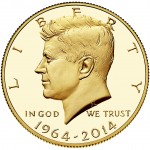 The change also removes any limits on mintages of 24-karat gold bullion coins allowing the U.S. Mint to produce as many to meet market demands. It will also allow the U.S. Mint to limit mintages on 24-karat gold bullion coins without asking for permission. This change just codifies current practice.
The change also removes any limits on mintages of 24-karat gold bullion coins allowing the U.S. Mint to produce as many to meet market demands. It will also allow the U.S. Mint to limit mintages on 24-karat gold bullion coins without asking for permission. This change just codifies current practice.
This first correction also removes paragraph (8) that requires protective covering, such as capsules for the coins. This will allow the U.S. Mint to package these coins for bulk sale as bullion coins adding to the potential for higher sales of gold coins. Although there has been no comment from the U.S. Mint, it is doubtful that they would sell collector versions of these coins in substandard packaging. That has not been their policy.
All that from just a few lines. Stay tuned because tomorrow we learn that congress actually did something right, for a change!


